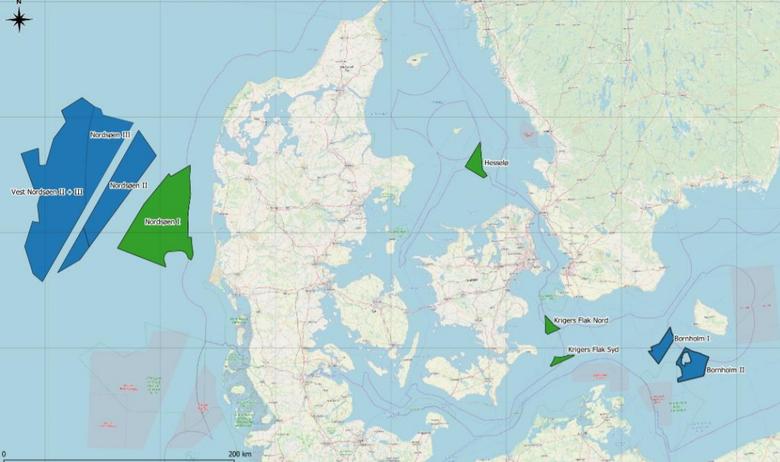
DENMARK'S CLIMATE AMBITION

PLATTS - 22 Jun 2020 - A majority in the Danish parliament has signed an ambitious climate agreement seeking to reduce greenhouse gas emission by 70% by 2030 on a 1990 baseline, the Ministry of Climate and Energy said June 22.
With climate neutrality by 2050 the ultimate goal, Denmark aims to reduce greenhouse gas emissions by 1.4 million mt/year by 2025 in an interim step, accelerating to 3.4 million mt/year by 2030.
The centerpiece of the agreement is creation of two energy islands connecting 5 GW of offshore wind capacity.
"The energy islands will be the world's first and must future-proof Danish offshore wind expansion," the ministry said.
The largest island in the North Sea would have capacity for 3 GW of connections in 2030 with room for at least 10 GW in the longer term. The island would be expanded in phases as electricity demand increased, alongside trade with third countries, the ministry said.
A second energy island on Bornholm in the Baltic Sea would connect 2 GW.
A concession for a further 1 GW of offshore wind would be made available in the Hesselo sea area, to be commissioned in 2027.
"It is a condition of the projects that they are profitable" and, as far as possible, do not require public subsidy, the ministry said.
The parties agreed funding of studies into the islands and Hesselo of DKr214 million ($32 million).
On June 4, a report for the Danish Energy Agency detailed Danish sea areas large enough to host multiple gigawatts of offshore wind capacity (see map).
"In the long term, the energy islands should be able to connect technologies that can store or transform this green power into green fuels" such as renewable hydrogen, it said.
CCUS boost
In other policy strands linked to the agreement, support of carbon capture, use and storage was seen as necessary while, in the heat sector, individual oil and gas boilers "must be phased out and replaced with heat pumps and green district heating," the ministry said.
CCUS would supported by technology-neutral, market-based funding of DKr202 million in 2024, rising to DKr406 million/year in both 2025 and 2026, then up to DKr626 million/year in 2027 and 2028, and then DKr815 million/year from 2029.
This funding is aimed at delivering CO2e reductions of 0.4 million mt in 2025 and 0.9 million mt in 2030. Support is to run for 20 years. The government is to propose a more detailed support mechanism.
Power-to-X
On the electrification of hard-to-abate transport and industrial sector emissions, the agreement seeks partnership with external players on a government-backed grant scheme for power-to-X systems, including projects that reduce the cost of renewable hydrogen production.
"The parties to the agreement note that an agreement has been reached with the Netherlands on statistical transfer of renewable energy credits," the ministry said.
This deal, announced June 19, would help the Netherlands reach its 2020 renewable energy commitments.
The agreement would provide "at least" DKr750 million for Denmark, to be used to help finance some 100 MW of power-to-X capacity.
Meanwhile, the parties to the agreement are to work on significant tax reform after the summer break to incentivize green heat choices over conventional hydrocarbon solutions, the ministry said.
This would rise in the early 2020s, to equate to redistribution of DKr830 million per year for 2025-30, it said.
The energy agreement forms the first part of the government's overall climate action plan. After the summer, it is to tackle transport and agriculture, it said.
-----












